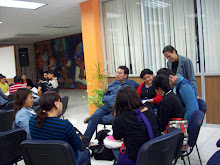Stages of the Lunar Eclipses in Feb,2008

Lunar Eclipses Feb, 2008 - The Red Moon

Wednesday night's lunar eclipse as seen from San Pedro
Photographs by Maya
The Moon turned an eerie shade of red for people in the western hemisphere late Wednesday and early Thursday, recreating the eclipse that saved Christopher Columbus more than five centuries ago.
In a lunar eclipse, the Sun, Earth and Moon are directly aligned and the Moon swings into the cone of shadow cast by the Earth.
But the Moon does not become invisible, as there is still residual light that is deflected towards it by our atmosphere. Most of this refracted light is in the red part of the spectrum and as a result the Moon, seen from Earth, turns a coppery, orange or even brownish hue.
Lunar eclipses have long been associated with superstitions and signs of ill omen, especially in battle.
The defeat of the Persian king Darius III by Alexander the Great in the Battle of Gaugamela in 331 BC was foretold by soothsayers when the Moon turned blood-red a few days earlier.
And an eclipse is credited with saving the life of Christopher Columbus and his crew in 1504.
Stranded on the coast of Jamaica, the explorers were running out of food and faced with increasingly hostile local inhabitants who were refusing to provide them with any more supplies.
Columbus, looking at an astronomical almanac compiled by a German mathematician, realised that a total eclipse of the Moon would occur on February 29, 1504.



























































